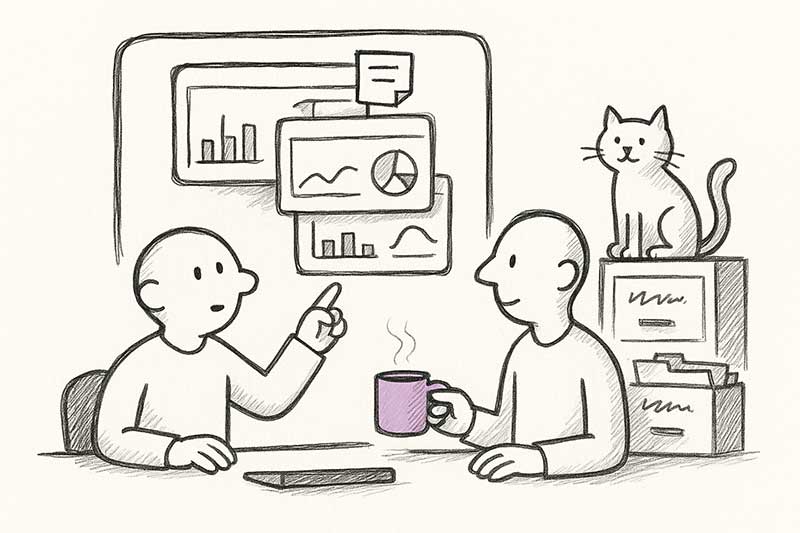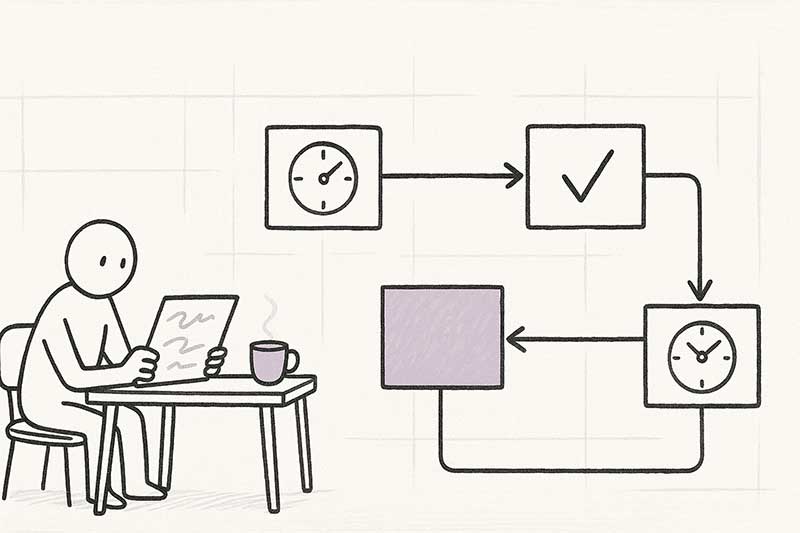RAG (Retrieval-Augmented Generation)
What is RAG (Retrieval-Augmented Generation)?
RAG is a way to make AI a lot smarter without retraining it every time. In simple words: it helps an AI tool look up information before answering.
Normally, a model like ChatGPT gives answers based on what it has already learned during training. That means it doesn’t automatically know about your company’s data, new regulations, or recent events. With RAG, the model first searches through a collection of trusted sources, finds the right pieces of information, and then uses those to give a grounded answer.
You can see it as a mix of search and generate. The search part finds the facts. The generation part explains or summarizes them in a clear way. That’s why RAG is often used in company chatbots, support assistants, or tools that answer questions based on internal files.
Let's say you want to develop an internal AI assistant to help with customer support. This AI assistant needs to be able to know about a customers order history, shipment tracking, inventory levels, support tickets etc. It's not feasible to retrain your model every day so that it has up-to-date data. Instead you train the model once in a way that it understands the context of your organization and its purpose. When the AI assistant gets a new request it know where to pull all the customer data from and use it as an input to provide a response.
How RAG compares to MCP
RAG and MCP are often mentioned together, but they don’t do the same thing. They both help AI systems go beyond what they know by default, yet they solve different parts of the puzzle.
RAG focuses on finding the right information. When an AI model gets a question, it first searches through external data sources such as documents, databases, or websites. It pulls out the most relevant pieces and then uses those to write its answer. This makes the output more accurate and grounded in real data. You can think of RAG as the model’s way of “looking things up” before replying.
MCP, short for Model Context Protocol, works differently. It’s not about finding information, but about connecting the AI to tools and systems. Through MCP, an AI model can talk to other software in a structured way. For example, it can open your calendar, query a database, or send an email, depending on which tools it’s connected to. MCP gives the model a clear and safe way to take action or get live data, instead of just generating text.
The two are complementary. RAG gives the AI context, while MCP gives it capabilities. With RAG, the model can base its answer on your latest company documents. With MCP, it can actually use that answer to do something, like create a ticket in your CRM or update a dashboard.
You could compare it to how a person works: RAG is like checking the right folder for the information you need, while MCP is like using your laptop to perform the next step based on what you found. One is about knowledge, the other about action. Together, they make AI more useful and reliable in real business settings.
FAQ about RAG
1. Why is RAG important?
Because it keeps your AI accurate and up to date. Instead of relying only on what it once learned, it can pull in the latest data and company information.
2. Does RAG store data permanently?
No. It just retrieves the right data when needed. The information stays in your original sources.
3. Do I need RAG for every AI use case?
No. If your AI task doesn’t need live or company-specific data, you can skip it. But for things like chatbots, reporting tools, or internal assistants, it’s often worth it.
4. Can RAG and MCP work together?
Yes, and that’s often the best setup. RAG finds the context. MCP lets the AI use that context to do something useful.
5. Is RAG complicated to set up?
It depends on your setup. You usually need a place to store and search documents (like a vector database) and a way to connect that to your model. Once it’s in place, it runs quietly in the background. There are some low-code tools available to set up RAG but you still need a good understanding of your data, retrieval logic, and prompt/LLM integration
Related Terms

Version control for Power BI
Simple guide to set up version control for Power BI using PBIP, Git and clean repo structures. Learn...
Nov 20, 2025
How to create an event log for process mining
A step by step guide on how you can create an event log for process mining.
Nov 18, 2025